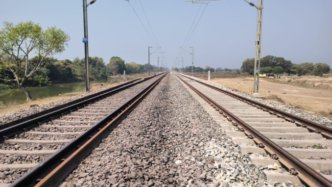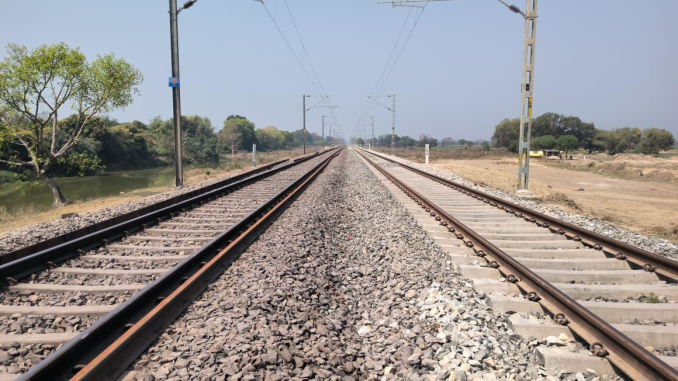Bhagalpur–Dumka–Rampurhat rail line spanning across Jharkhand, Bihar, and West Bengal got approved by the Cabinet. The Rs. 3,169 crore project covers 177 km, aims to cut down congestion, boost interregional connectivity and improve the pace of freight as well as passenger movement. This significant decision will accelerate development in the three states, and the initiative aligns with India’s broader goal of ‘Atmanirbhar Bharat’.
Introduction:
The Cabinet Committee on Economic Affairs chaired by Prime Minister Shri Narendra Modi has sanctioned the doubling of the Bhagalpur–Dumka–Rampurhat railway line section. The rail line spans 177 km across Bihar, Jharkhand, and West Bengal is a much needed decision to develop the region as well as improve multi-modal connectivity. The project, estimated at a cost of Rs. 3,169 crore, will support the sustainability goals of the country and will contribute to economic growth.
Key Highlights of the Project:
- Line Doubling: Covers 177 km across Bihar, Jharkhand, and West Bengal
- District Coverage: Avail five districts including three key districts—Banka, Godda, and Dumka.
- Population Impact: Better connectivity for around 28.72 lakh people across 441 villages.
- Tourism Boost: better access to Deoghar (Baba Baidyanath Dham) and Tarapith (Shakti Peeth), two vital pilgrimage destinations in the regions.
- Freight Efficiency: Expected to handle 15 MTPA additional freight, including coal, cement, fertilizers, bricks, and stones.
Strategic Importance:
The Bhagalpur–Dumka–Rampurhat stretch is a significant route for the passengers as well as the freight movement. After the completion of the work it will majorly reduce congestion which in turn will lower the train delays and improve efficiency of the trains.
The project comes under PM Gati Shakti National Master Plan, underscores the commitment of the government towards improving the integrated infrastructure for the ease of passengers. The multi-modal connectivity will help in reducing logistic costs and support the sustainable goal of the nation.
Economic and Social Benefits:
- Employment Opportunity: The project will generate employment by having construction and other related works, directly supporting the goal of Atmanirbhar Bharat.
- Pilgrimage and Tourism: Better rail access to Deoghar and Tarapith will boost tourism in turn it will help local business growth.
- Freight Transport: Improved movement of industrial commodities will support economic growth across the eastern states.
Environmental Impact:
Railways, being the most energy-efficient mode of transport, will contribute to greener goals:
- Oil savings of 5 crore litres annually.
- Reduction of 24 crore kg CO₂ emissions.
- Equivalent impact of planting 1 crore trees.
- Alignment with National goal of sustainability
The project supports the Prime Minister’s vision of self-reliant Bharat by 2047. It reinforces the backbone of India’s infrastructure by blending efficiency, sustainability, and inclusivity. The comprehensive approach is designed to ensure that the benefits reach both urban centers and rural communities.
Conclusion:
The Bhagalpur–Dumka–Rampurhat line doubling marks is a crucial move toward better logistics, regional development, and achieving sustainable transport goals. By improving connectivity across Bihar, Jharkhand, and West Bengal, the project showcases India’s commitment towards Atmanirbhar Bharat and Viksit Bharat 2047. The decision is a strategic marvel to enable inclusive growth while meeting economic and environmental goals.
Source: PIB – Press Release | Image Credit (representational): MoR
[Nominations are Open] Submit your nomination (free) for the 7th Rail & Metro Awards 2026: Link
![]() Timely insights, straight to your WhatsApp—stay updated with ease!
Timely insights, straight to your WhatsApp—stay updated with ease!
![]() Stay connected to the rail industry—timely news, straight to Telegram!
Stay connected to the rail industry—timely news, straight to Telegram!


